|
For larger print text or to download, click the PDF file below.
0 Comments
Good Shepherd Sunday
It's the backstory that says somethingThroughout the year, the Southern New England Conference of the United Church of Christ reproduces the Daily Lectionary for use by churches. These are the suggested readings for Holy Saturday, April 3rd : Job 14:1-14; Psalm 31:1-4, 15-16; Matthew 27:57-66 and 1 Peter 4:1-8. I would encourage you to read these short selections as part of your Lenten practice.
I belong to the Hatfield Equity Alliance. About once every 4-6 weeks I join the group as we conduct stand-out’s holding Black Lives Matter signs. Black Lives Matter needs to be said not because all lives don’t matter, but because Black Lives Matter needs to be asserted because it has proven to not always be the case. Right now a court is hearing the case against the police officer charged with murdering George Floyd. The video of 9 minutes and 29 seconds sparked a national, even international outburst of anger that Black lives really don’t seem to matter. I would not need to hold a sign pointing to me that says “White, heterosexual, middle-class, college educated guys matter” because in our society this is not questioned. It doesn't need to be said, in other words. Sometimes what needs to be said reflects an unspoken backstory. Let’s take a look at today’s Gospel. Matthew is what scholars refer to as a Jewish-Christian Gospel. The community for which it was written has emerged from the Jewish tradition. This community would have been the ones of the earliest Jewish followers of Jesus. They were Jewish Christians most likely living among other Jewish people. We read today only in Matthew the plea of the Jewish authorities: “‘Therefore command that the tomb be made secure until the third day; otherwise his disciples may go and steal him away, and tell the people, “He has been raised from the dead”, and the last deception would be worse than the first.’” Since this appears in none of the other three Gospel accounts, we may assume that this is a theological colouring added by Matthew for a purpose. What would be the backstory for such an addition? Obviously, it must be that people were challenging the proclamation of the empty tomb by insisting that Jesus’ dead body had been stolen not raised. The detail of the Roman guards needs to be shared to counter the Easter assertion. The other three Gospels have no mention of guards, nor of an Easter morn “violent earthquake,” nor of an angel whose face “shone like lightning” descending from heaven to roll away the stone and then sitting upon it, nor that the guards “shook with fear and fell to the ground as though dead.” These are not minor details that could be forgotten or ignored by the other Evangelists. These are theological colourings that Matthew uses to counter the argument that Jesus’ body was stolen. Why? Because that was the charge being asserted by others. Surprisingly, it may seem, I find this account to be an authentic witness to the reality of the resurrection. Not because I believe in all of Matthew’s unique additions, but because of the backstory. The story of the guards at the tomb was added because of the historical reality that the tomb was empty. The empty tomb is not questioned. The accusation by non-believers, therefore people with no interest in testifying to the resurrection, is that yes, the tomb was empty, but because the body was stolen. Both believer and non-believer agree that the tomb was empty. The non-believer purports that Jesus’ followers, the ones who had deserted Him and dispersed at Jesus’ arrest because they could not grasp what He had told them all the way into Jerusalem that He would suffer and die, had someone regained their spiritual composure and stolen the dead body in order to continue the work they no longer seemed to believe in. Let us jump ahead to the story of Pentecost. We are told the unflattering story of the fearful and confused disciples who are still in hiding, and yet these are the ones who came back to steal Jesus’ body? The women disciples are much more attuned and faithful than are the men, and for as much as I stand-up for their spiritual strength, are we going to credit them with the physical strength of a nighttime raid to steal and move Jesus’ body? Remember, this is the festival of Passover. Pilgrims are sleeping anywhere and everywhere. Jesus and the disciples were camping out on the Mount of Olives with other travelers before all of this happened. Are we to assume that no faithful Jewish man or woman who had traveled to Jerusalem for this high holy day would not have seen and reported the strange activity around this very public burial spot? Wouldn’t this have made it into the non-believers’ accusation of the stolen body? I don’t believe Matthew’s details, but I believe Matthew’s opponents’ assertion that the tomb was empty, and because the tomb was empty, I also believe with a deep-seated conviction and joy and hope that Jesus was raised from the dead. So today I wait, we wait, for His death to pass and for the sun to rise on a glorious new day, the day that the Lord has made. If you would like to share in our outdoor Sunrise Service tomorrow, you are more than welcome to join us at 2 Prospect Street at 6:20am as we look East and hopefully watch the sky lighten over our church’s steeple. We will continue our Easter celebration with our church worship Service at 10:00am. You may join us in person following the necessary protocol precautions or you may join us for the live-streamed format. If you would like to join us online, drop me an email ([email protected]) and I will send you the login link. Jesus dies as an outcast and He resurrects as our Saviour. May the reality of Easter help us believers to stand with the outcasts, to listen to and appreciate the backstories of our society and realize that there is much to be done in Jesus’ name so that all people, whoever they are, whatever they look like, however they believe, may be respected as loved by our outcast, and soon to be risen, Saviour. If you’d like, here is the link to the Southern New England Conference’s daily reading schedule: www.sneucc.org/lectionary. And they passed byThroughout the year, the Southern New England Conference of the United Church of Christ reproduces the Daily Lectionary for use by churches. These are the suggested readings for Good Friday, April 2nd: Psalm 22; Isaiah 52:13—53:12; John 18:1—19:42; and Hebrews 10:16-25. I would encourage you to read these short selections as part of your Lenten practice.
Today is the day that Jesus dies on the cross. Mark tells us that Jesus is crucified at 9AM, that the skies grow dark at noon and that Jesus dies at 3PM. The church building will be open for private prayer and meditation from 11:45am – 3:15pm. Please come by and share in the sacred space of Jesus’ house. Today’s selected Gospel is extensive. It is John’s Passion account. But today is a day that should be marked with solemnity, silence and acts of piety. It is a day on which spending a bit more time with the Bible is not a bad thing. In this reading, we hear that Pilate places a titulus on Jesus’ cross reading “Jesus of Nazareth, the King of the Jews.” John wishes to place all the blame for Jesus’ crucifixion squarely on the Jewish authorities as you can sense when reading the Passion, which means that he attempts to ameliorate Pilate’s role. Accordingly, the titulus is treated reverently as if it were Pilate’s tacit agreement that truly Jesus is the King of the Jews (cf. 18:36-37). This is most definitely a theological colouring of history. The titulus is the standard practice of listing the charge of the condemned. The Romans abhorred insurrection against their authority, and they made examples of those who dared to challenge the Empire. This emerges and is coopted into John’s Passion account with the accusation of “You are no friend of the Emperor” (19:12), which is used to force Pilate’s hand. If we wash out the theological colouring, what is left is the straightforward charge of Jesus’ insurrection, an insurrection that brewed for the three years since Jesus’ riotous disruption of the Temple – for remember in John this occurs on Jesus’ first Passover visit to Jerusalem (2:13+). We are told that many read this inscription “because the place where Jesus was crucified was near the city.” (19:20) Imagine this scene. Jesus hangs in agony, suffering through a torturous, slow, public display of His death. Above His head is nailed the titulus. People passing by pause to read. People on their way into the city to prepare for the Passover celebration pause to read. Gentiles hoping to make a profit off all of these pilgrims pause to read. The soldiers cast lots for Jesus’ last possession, His tunic, and they must have paused to read. The Jewish authorities complained to Pilate because of what they paused to read. And yet beneath the titulus hangs Jesus, dying. So many people paused to read its inscription and then passed by, then went about their ordinary business. This apathy must have added to Jesus’ suffering. These were the people Jesus loved and dedicated Himself to for a lifetime, and they passed by the extraordinary scene of our crucified God. We have today the chance to right this wrong. People today will continue to pass by, but rather than judge them, why don’t we right this wrong by making the conscious effort to spend time with Jesus today, to consider the ineffable love of Christ for all people when He even accepts the cross? It is written in the Epistle to the Hebrews that “since we have confidence to enter the sanctuary by the blood of Jesus, by the new and living way that he opened for us through the curtain (that is, through his flesh) … let us approach with a true heart in full assurance of faith.” Jesus allows us entry before God by opening symbolically the curtain to the Holy of Holies. Mark shares the tradition that the Temple curtain was torn after Jesus died and Luke the same tradition but before Jesus dies. Hebrews adds its own theological colouring to this detail. The curtain is Jesus’ body. With its sacrifice, the curtain that separated the holiness of God from the profanity of creation is opened. Jesus’ death is the final testimony of Jesus’ life that we are invited to come close to God, that we are so loved by God that even the death of the Son is not too high a cost to pay. We have been invited to “approach with a true heart in full assurance of faith.” Let us not merely pass by on this solemn and sacred day. Let us today respect Jesus’ eternal sacrifice by the act of remembering. If you’d like, here is the link to the Southern New England Conference’s daily reading schedule: www.sneucc.org/lectionary. "'Just as I have loved you ...'"Throughout the year, the Southern New England Conference of the United Church of Christ reproduces the Daily Lectionary for use by churches. These are the suggested readings for Maundy Thursday, April 1st: Exodus 12:1-14; Psalm 116:1-2, 12-19; John 13:1-17, 31b-35; and 1 Corinthians 11:23-26. I would encourage you to read these short selections as part of your Lenten practice.
The Jewish feast of Passover celebrates God’s deliverance of His people from slavery. It is a religious festival of liberation. As we read today in Exodus, “This day shall be a day of remembrance for you.” It is still observed piously among our Jewish brothers and sisters. This year it began on Saturday evening of this past weekend and it will continue through evening this Sunday. 2,000 years ago, Jews from the diaspora throughout the Roman Empire were coming back to the holy city of Jerusalem in order to perform the sacred rites that could only take place at the Temple. This was a joyous season, and an awe inspiring one. Many of the pilgrims to Jerusalem may have come to see the Temple but this one time in their lives. I would imagine that they felt the closeness of God. We encounter that same sense of continuity with Jesus’ last Passover, His Last Supper. Paul today uses technical language when he writes to the Corinthians: “For I received from the Lord what I also handed on to you …” This is the purposeful language that indicates Paul is maintaining a tradition that has been received and handed-on with a special emphasis upon accuracy. What this means is that in the earliest church there was already a reverence for the sacrament of the Lord’s Supper. I have mentioned several times the story of my transition from a Catholic to a Protestant denomination. I was taking the UCC’s Polity Course at Camp Calumet for two weeks. The course ended with our sharing of Holy Communion. This would be the first time that I had accepted Holy Communion in a Protestant denomination. When I shared in Holy Communion, even though I obviously knew that there were theological differences in the way it was understood by Protestants and Catholics, I still felt the sanctity of the sacrament. It still brought me closer to Jesus in some special spiritual/psychological way. The theology was different, but the experience was the same. The special reverence of what began at Jesus’ last Passover meal, His Last Supper, continues to our present and surely beyond. As our Jewish brothers and sisters observe the Passover and feel the closeness of God and celebrate the liberation He gifts them with, so we observe Maundy Thursday. We have received and continue to pass on the sacred tradition of Jesus’ mystical presence in the sacrament and the liberation He achieves for us through His life and His quickly approaching death. Maundy Thursday derives its name from the Latin word for commandment, mandatum. The commandment is told to us in today’s Gospel selection: “‘I, your Lord and Teacher, have washed your feet, you also ought to wash one another’s feet. For I have set you an example, that you also should do as I have done to you. … I give you a new commandment, that you love one another. Just as I have loved you, you also should love one another. By this everyone will know that you are my disciples, if you have love for one another.’” This is not a nebulous call to love one another as we so choose. Jesus commands that we love “[j]ust as I have loved you.” And Jesus had just displayed that love in the shocking reversal of roles when the teacher takes on the appearance and duties of the servant and washes the feet of the disciples. “‘I have set you an example,’” says Jesus. Christian love is equated with Christian service. We express our love not easily with words, but with what we do for one another. I leave you with this thought. In Matthew, Mark and Luke, the primary focus of attention at the Last Supper is Jesus’ institution of Holy Communion. In John alone, the last written Gospel of the four, Communion was taken out of the closed Upper Room and shared widely among the throngs gathered on a mountainside. The focus of John’s Last Supper is Jesus’ “new commandment.” John has had the chance to witness Paul’s “received and handed on” importance of the Lord’s Supper. He may have had some sort of awareness of the Synoptic Gospels’ Last Supper accounts. Did any of this influence John’s decision to instead focus the Last Supper’s attention on the “new commandment”? Was it not to detract from the tradition of Holy Communion instituted at the Last Supper, but to add on to it the necessity that Christians who share in Jesus’ mystical presence in Communion must likewise, with equal sanctity, live in imitation of Jesus’ love as humble service unto each other? I encourage you and I invite you to join other Christians worldwide as this night we continue to remember Jesus’ Last Supper and to celebrate the gift of His eternal presence among us through the gift of Holy Communion. If you’d like, here is the link to the Southern New England Conference’s daily reading schedule: www.sneucc.org/lectionary. |
NewsFaith, love and chitchat. Categories
All
Archives
June 2024
Follow
|
||||||
|
SERVICE TIMES
Sunday 9:30-10:30am Children Sunday School 9:30-10:30am Nursery care available during worship DONATE Make a single or recurring contribution by clicking here |
FOLLOW
|
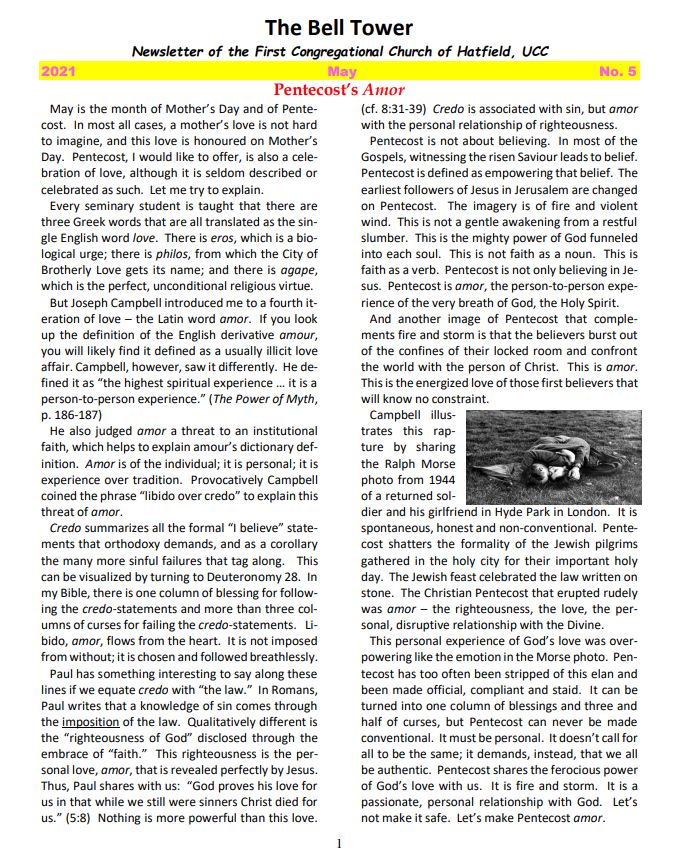
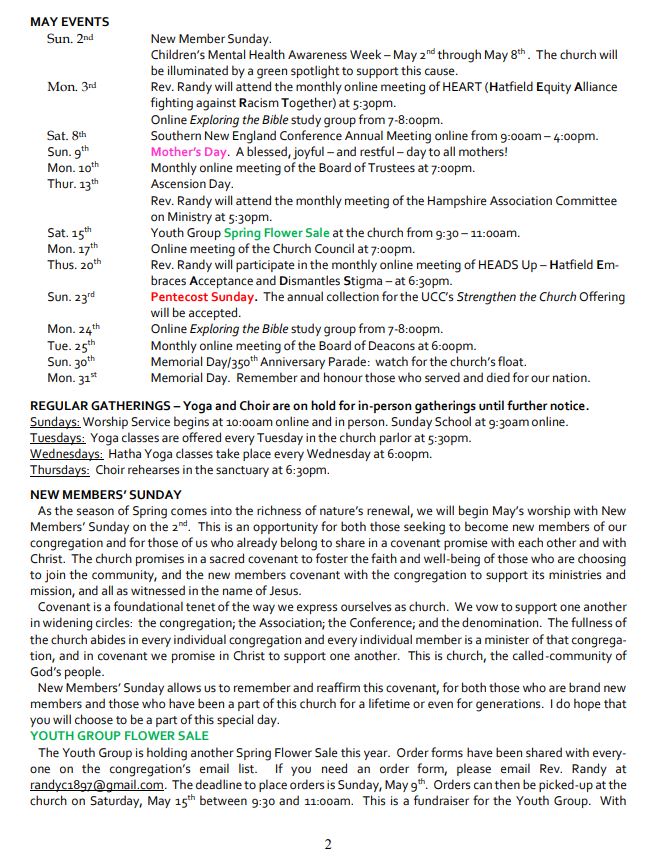
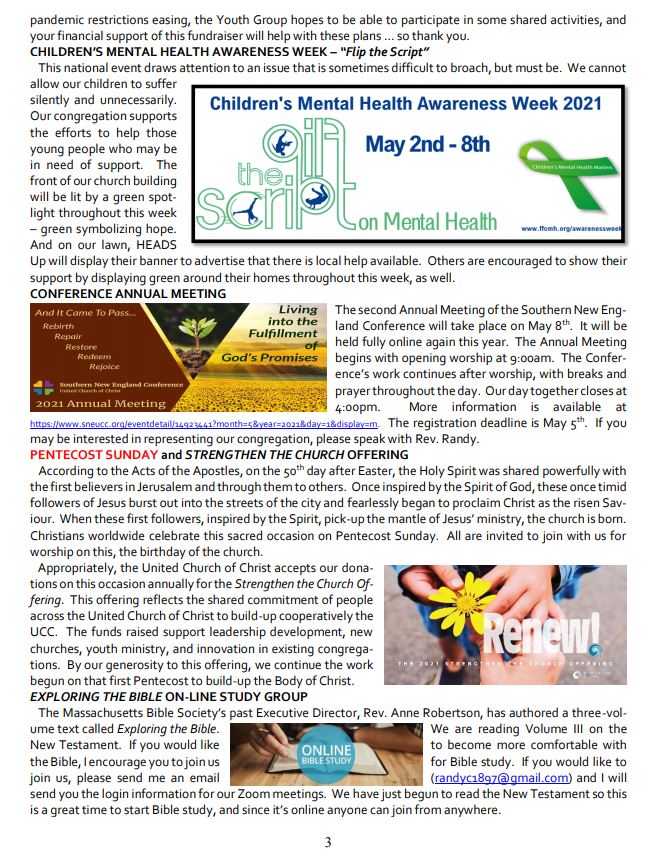
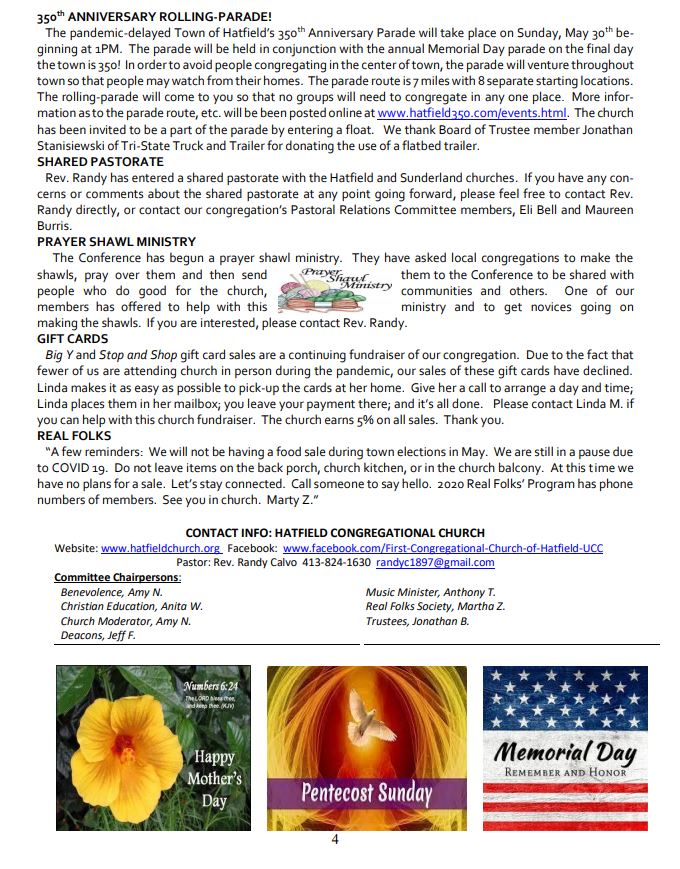
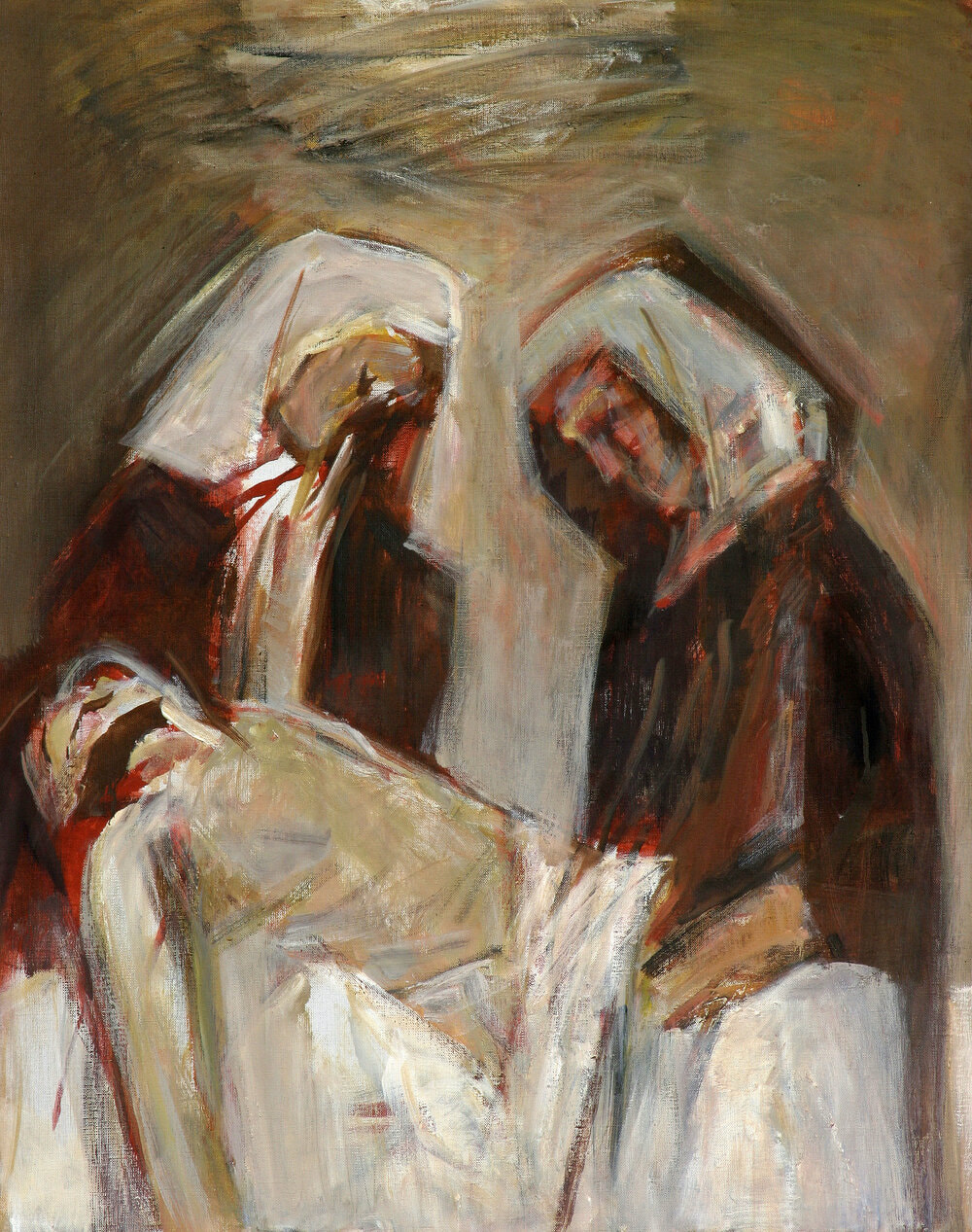
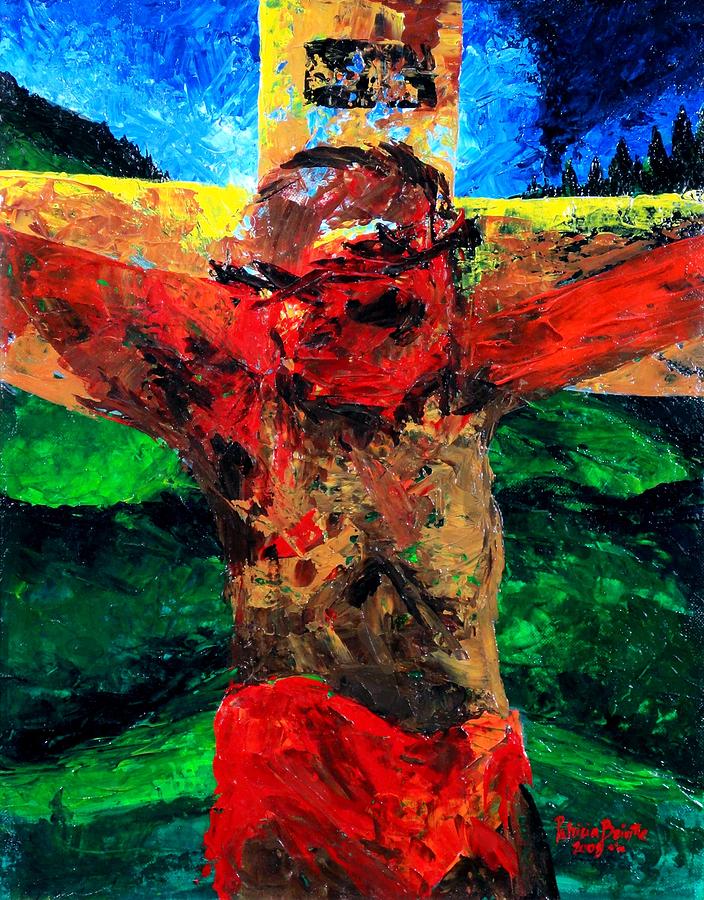
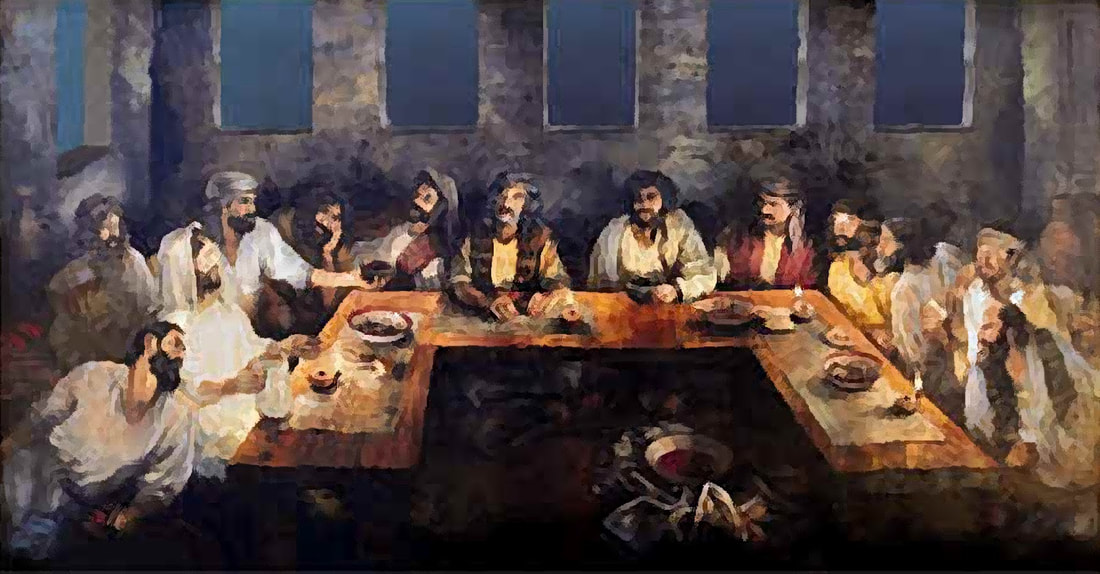
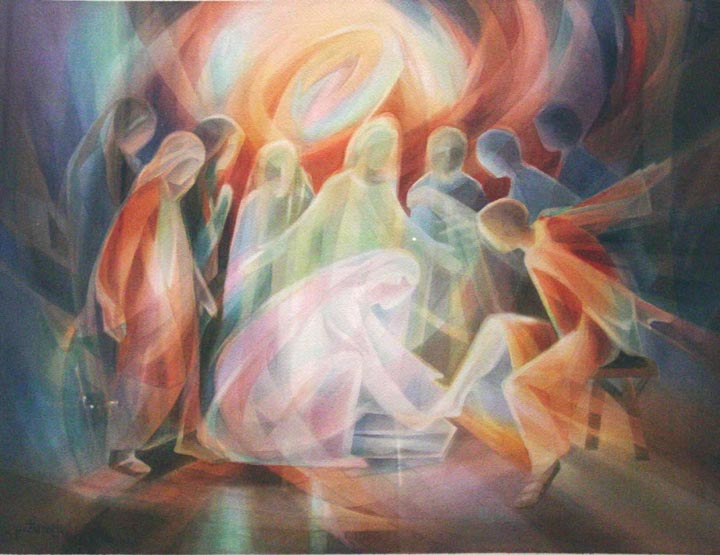
 RSS Feed
RSS Feed
